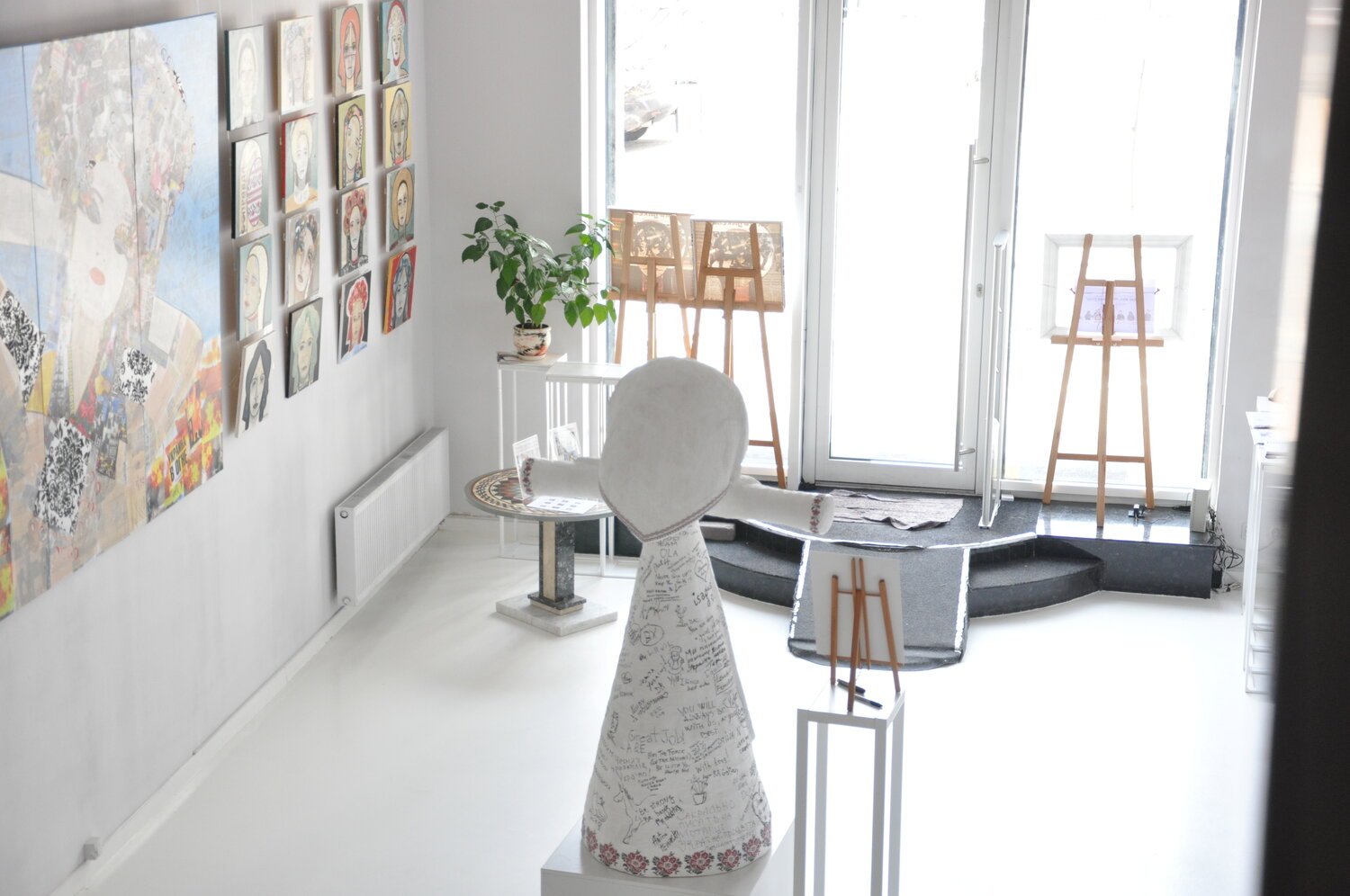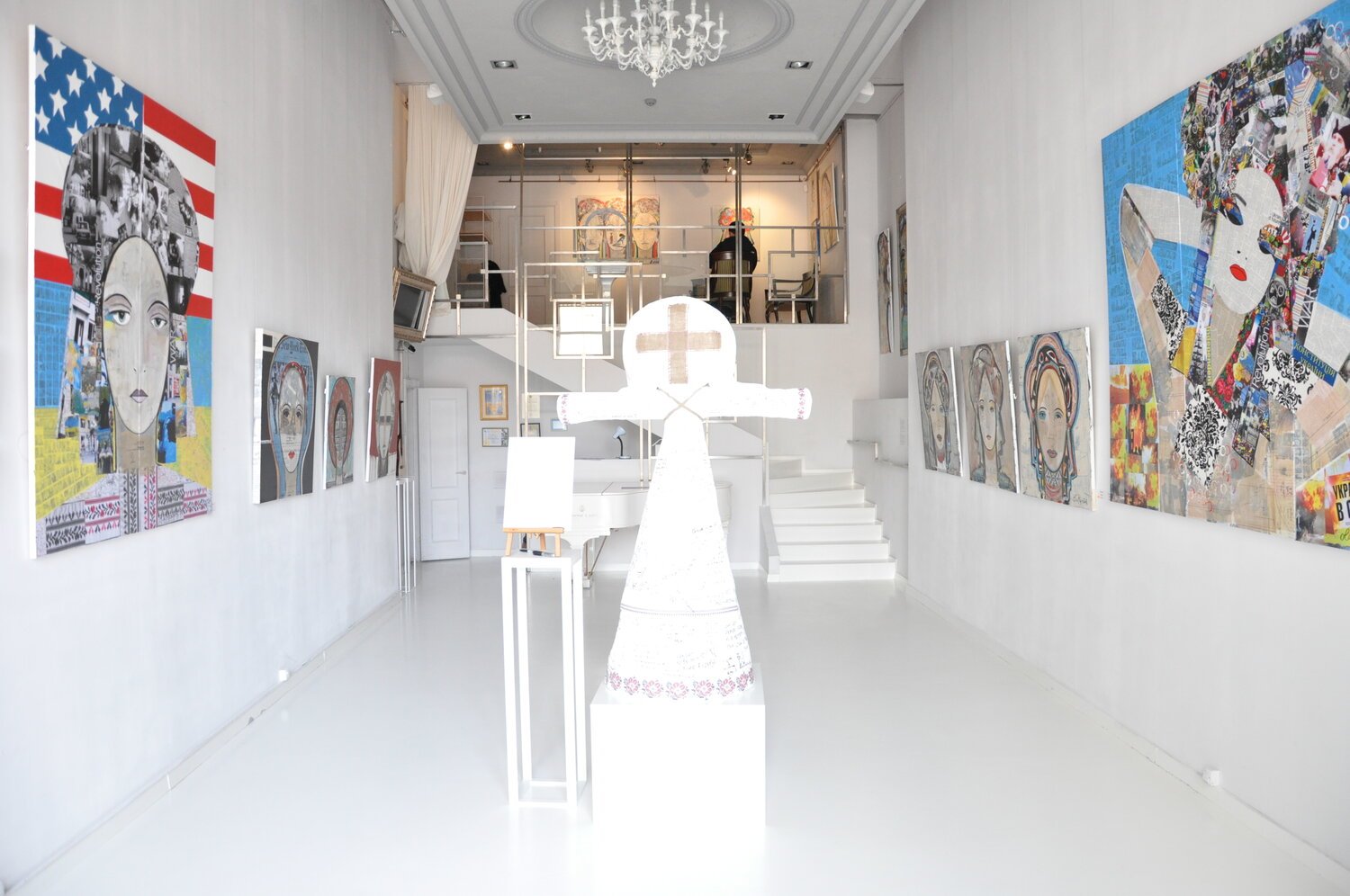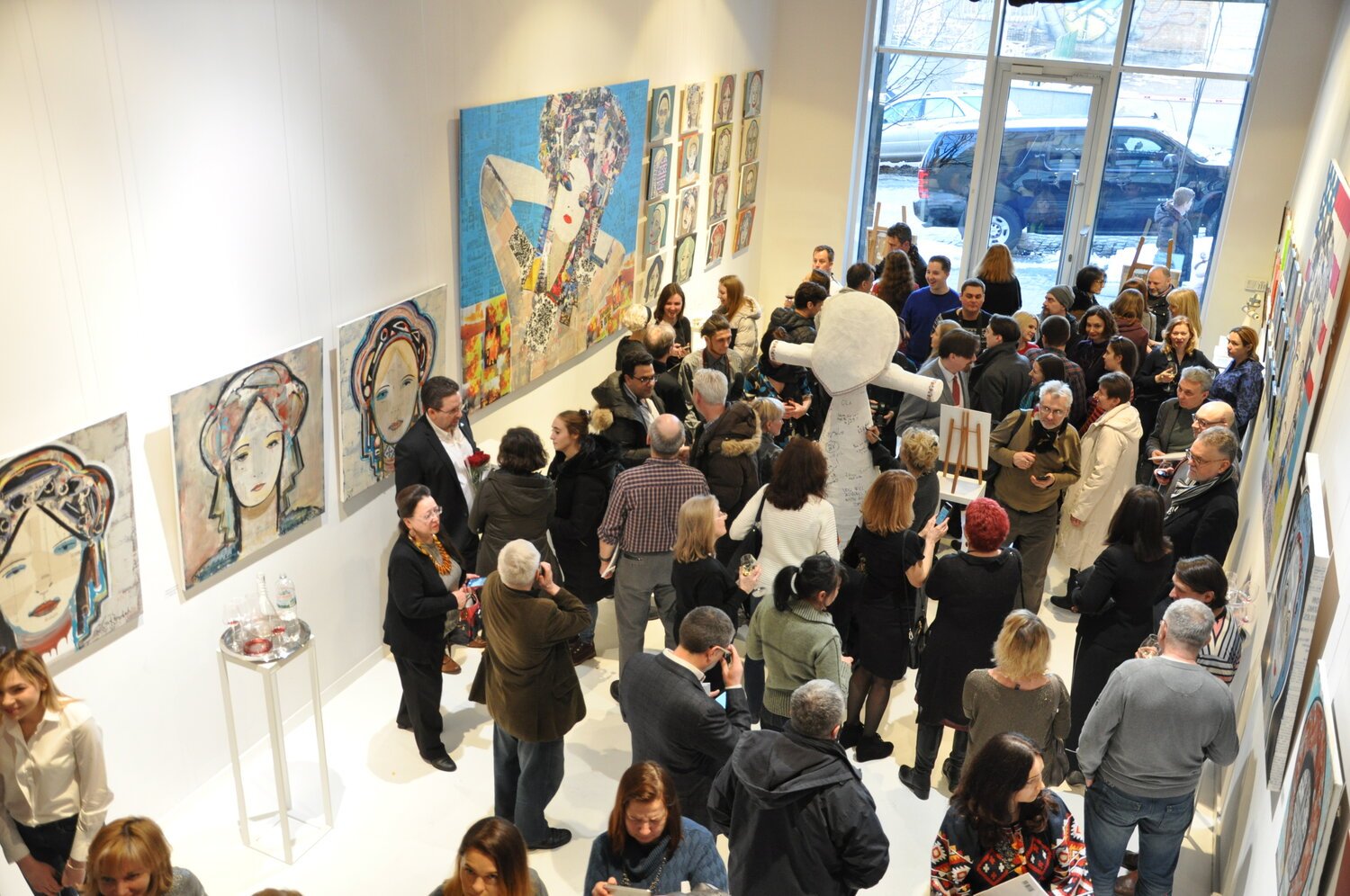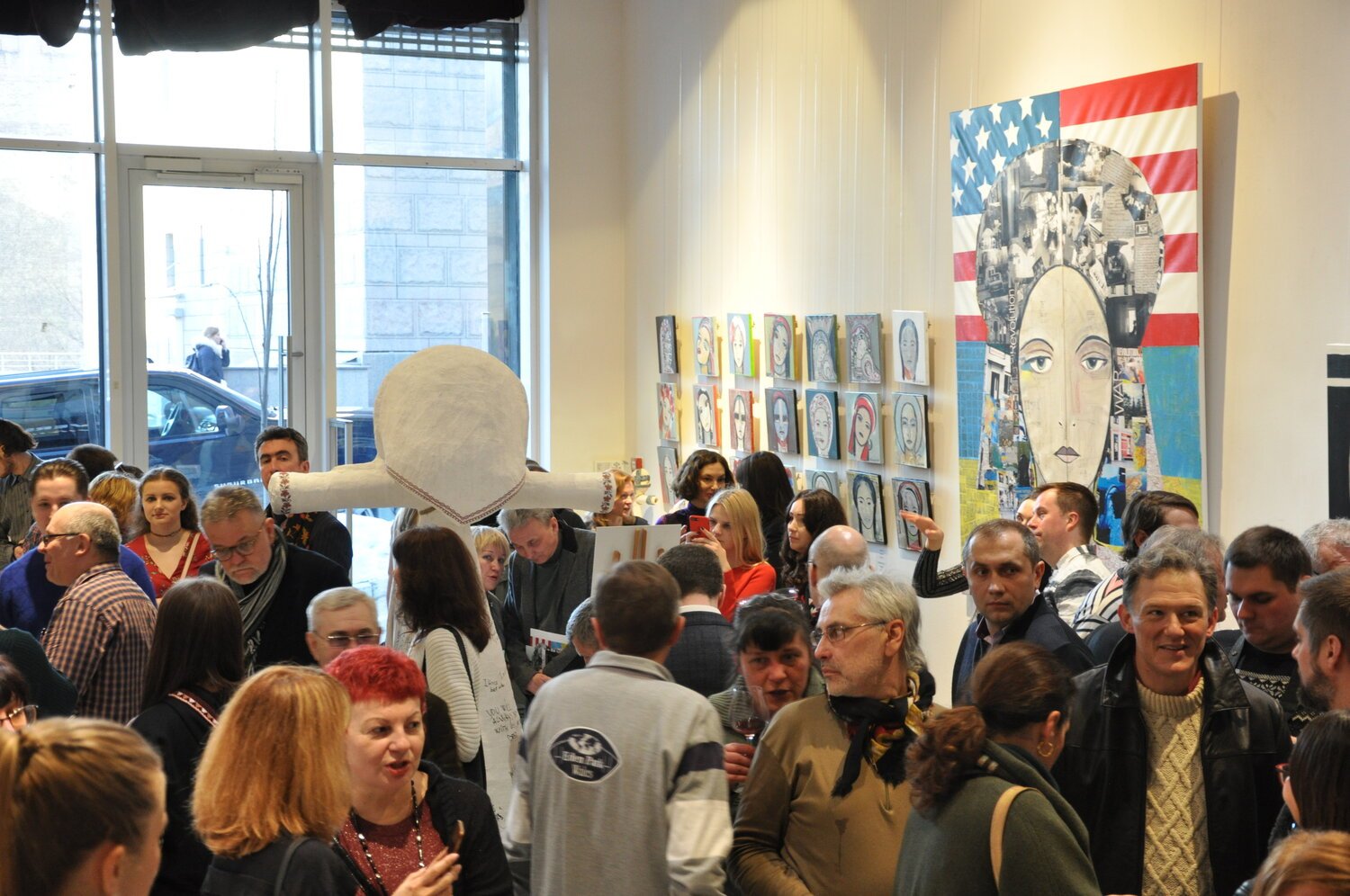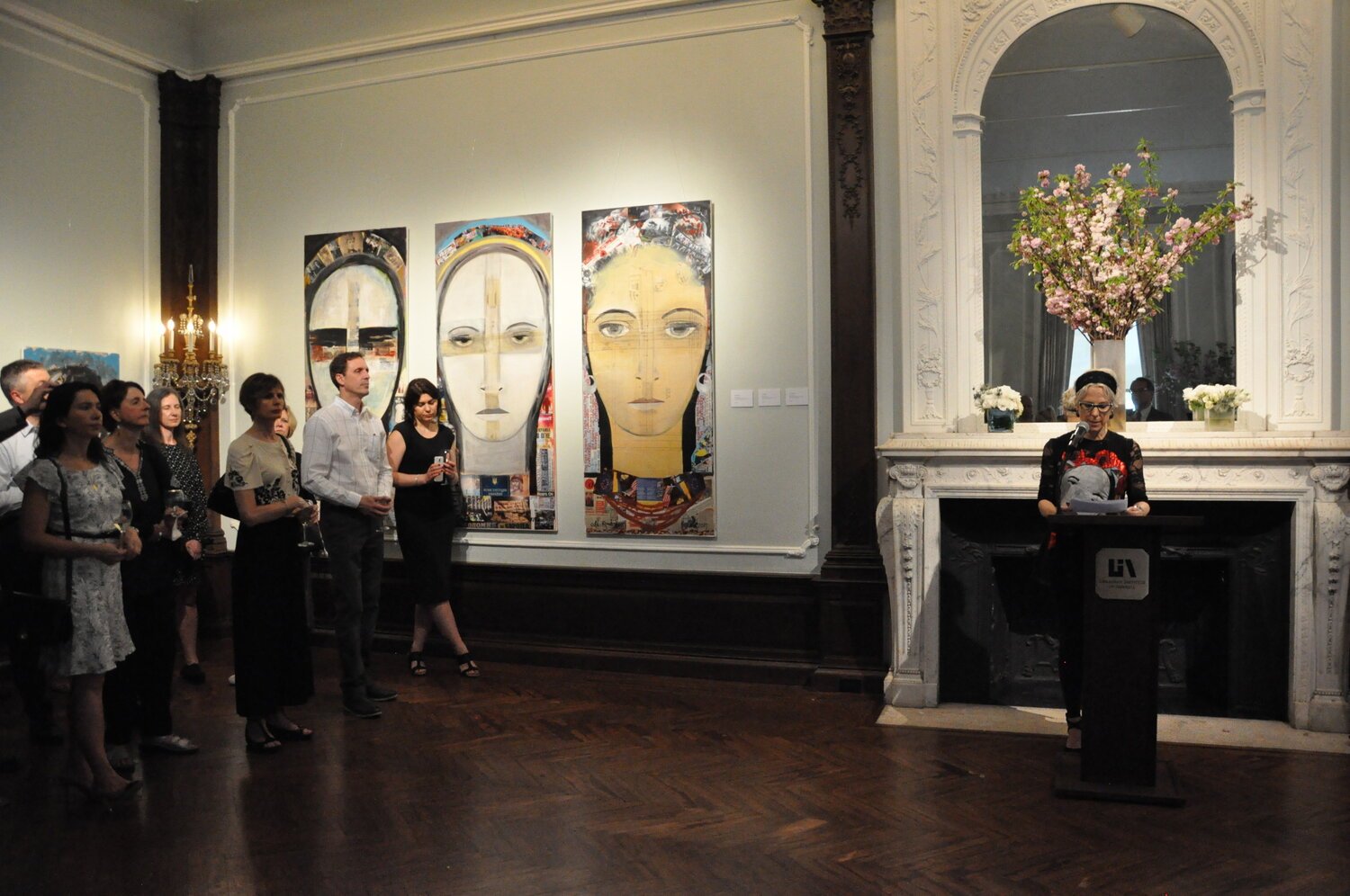Identity Interrupted (2018)
Artist Statement
Written by Ola Rondiak
In my series Identity, Interrupted, I share how my Ukrainian identity, growing up in America, as the daughter of immigrants, was challenged when I began day to day life in a newly independent, 1990’s Ukraine.
The Ukraine that I was identifying with was the one that my mother left at 11 years old. She arrived on Ellis Island with my grandfather when she was 16 years old. Life was quite difficult for my grandfather as he lost one of his daughters, had to leave behind his wife and home, including a well-established reputation as a professor. He arrived in America without any money, not knowing the language, and a 16 year-old daughter to feed. He worked wherever he could, including jobs as a dishwasher in a restaurant and in a greenhouse. Even though he lost the prestige he had in Ukraine, he said he would rather do any job in America than live without freedom. My grandfather taught me that we all have control over our own minds. Even while being physically tortured, he said that we have the power to have our own thoughts, and no one can take that away from us. He taught me how valuable freedom is, but how it comes at a great cost.
While my mother and grandfather ended up as refugees in Austria at a "Displaced Person's" camp, my grandmother was sent to a female labor camp in Mordovia, Russia. While she was there, after losing her family and home, she secretly created beautiful embroideries using fish bones for needles, potato sacks for canvas, and threads from her clothing. She managed to smuggle them out after being released and passed them on to a clandestine priest who was traveling to America. He then smuggled them into the states, where the Chicago Tribune wrote an article about them in 1980, after which they eventually found their home with my family.
Growing up in America, it was very natural for me to tell everyone that I was Ukrainian. My parents felt it deeply important for us to learn the Ukrainian language, history and culture. The Ukrainian community was strong in all major cities. I attended Ukrainian school on Saturdays, Ukrainian church on Sundays, and Ukrainian scouting camps during summer and winter school breaks. My parents were fulfilling a deeply felt obligation to keep Ukrainian culture alive because on the other side of the Iron Curtain, the very existence of the Ukrainian National Idea was being threatened. They feared that Ukraine itself could disappear as the language, religion, and culture were being russified in the USSR. Ukraine, as I knew it, became a very strong part of my identity.
In 1991, Ukraine gained its independence and my husband and I moved to Kyiv shortly thereafter in 1995. We wanted to experience our roots first hand. The irony was that when I moved to Ukraine, the identity I wanted so badly to connect with was not there. In the streets of 1990’s Kyiv, Russian was the language of choice and the traditions I grew up with were considered quaint and provincial. I would have to re-define for myself what it meant to be Ukrainian. Redefine my core identity. My identity was interrupted.
Over the last 23 years living mostly in Ukraine, I have connected closely with many Ukrainians. They have taught me that being Ukrainian is more than just speaking the language and staying true to traditions. It’s a deeper feeling of belonging to and caring for a nation that you call home. I have learned that by following my heart and moving here I was able to form a more mature identity, which includes my American and Ukrainian roots. Living here and seeing how people still aren't allowed to travel as freely as I am, has also helped me respect the freedom of America that we often take for granted. While working as an artist, as well as a psychotherapist, I realized that I have a responsibility to continue this battle for freedom of our minds, bodies, and souls.
My grandmother, her strength and tenacity, has become my source of inspiration. The fact that she lost everything, was forced to do physical labor in a prison, and still had the strength to create embroideries, is my source of hope and renewal.
It hasn't always been easy raising three children here, while my mother and siblings were in America, but it has been an honor to watch Ukraine develop as a democracy and unfold its wings to freedom. This is what my grandparents and parents fought for and dreamed about. And although Ukraine is now fighting a war with Russia in the east and dealing with the left-over corruption, it is well on its way to realizing itself as a true democracy. I have witnessed this transition with my own eyes.
I have been creating contemporary female portraits since 2013. For me, the female image has become a metaphor for Ukraine, as they portray a courageous, free and determined spirit. I have learned that my art is an expression of something much greater than me. Although I always felt connected to my grandmother whom I never met, living here and being inspired by Ukraine, allowed me to tap into my spiritual connection with her, and she was able to pass her talent through me in order to continue this thread of unification. I realized not only how strong she was, but how much internal strength lies within the people here in Ukraine. I think that the timing of this exhibit is perfect.
Just as I have been redefining my identity, I think that after Maidan, and especially with the war in the east, Ukrainians are experiencing a new way to identify with Ukraine. Even though Ukraine has been technically independent for over 26 years, it takes time to put all the pieces together, for people to reconnect with Ukraine's history, roots and culture. Ukraine’s identity as a nation was also interrupted.
In addition to my paintings, I have created "Motanka" sculptures. The history of these ancient, hand woven, Ukrainian rag dolls resonate with me deeply. I created the sculptures as symbolic protectresses of Ukraine from its aggressors, and unifiers to heal Ukrainians from generations of pain. Over the centuries, many people have given their lives for Ukraine's freedom, including all the thousands in the last few years beginning with the Revolution of Dignity. This is why I have chosen to create the Motanka sculptures out of plaster of Paris, which is the material used to create casts to heal broken bones. I feel that Ukrainians have been repeatedly traumatized and perhaps are never given enough time to acknowledge the pain in order to begin healing. The first step to healing is to acknowledge the pain. This allows us to be true to ourselves and our children, which in turn opens the door for Ukraine to reach its full potential of developing into an independent and prosperous country.
“I would have to re-define for myself what it meant to be Ukrainian. Redefine my core identity.”
Installation Photos
Event Photos
Exhibition Videos
Select Exhibition Locations:
Tauvers Gallery International (Kyiv, Ukraine)
Ukrainian Institute of America (New York City, U.S.A)
Dzyga Gallery (Lviv, Ukraine)
Honchar Museum (Kyiv, Ukraine
For information about upcoming exhibits and events, connect with us.



